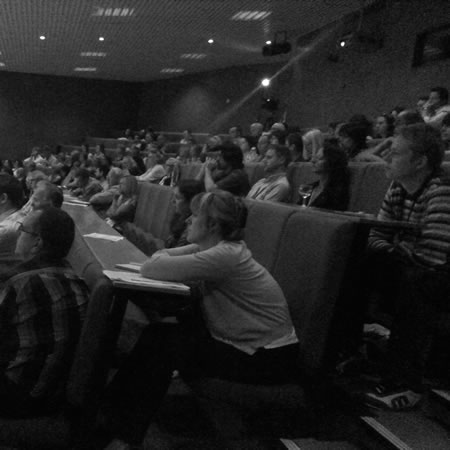
Though there are video sites out there on the web that will host video. Sometimes you may not want the video to be public out on the web. In that case hosting video on the VLE may be an ideal solution.
If the video is of a presentation on a tricky subject, or contains licensed content that you can place on the VLE, but are not allowed to freely distribute, or has the students in and some don’t want to be publicly online; then place the video on the VLE may be a better option than uploading to Vimeo or YouTube.
Video can be useful to enhance and enrich learning, one lecturer I know films his quiz questions, as the learners find this more engaging than reading them on paper, it also allows him to ask questions about practical stuff more easily than trying to explain a process on paper. Recording debates and discussions, allows learners to reflect and review them at a time and place to suit the learner, rather than just relying on notes and memory. Video analysis of sporting techniques ensures that learners can improve their technique through the video as well as verbal feedback.
By placing the video on the VLE, you can place it in the context of learning, enabling learners to clarify how the video works in respect of the rest of the course or topic.
For ease of access, by placing the video on the VLE, the learners will be able to click and download the video.
Generally though it isn’t perfect, the server may not be configured to deliver or stream video, likewise there may also be storage issues, as video files are generally much larger than text or Word documents.
This is fine if the learners click to download the video inside the college on the fast network connection, but less fine if the students are at home on a slow broadband connection, or more likely on a mobile device.
The key here is to encode the raw video file so that the resulting file is small in size, but not so compressed to be unviewable (very important if there is text in the video).
There is also the question of what type of file format you should upload. Should it be WMV, as everyone runs Windows? What about learners on a Mac, well they should be able to cope with extra software. However WMV is less useful for those on mobile devices or using non-traditional computers like the iPad or a gaming console like the PS3.

Similarly, if you using a Mac to edit the video, h.264 MP4 files are excellent quality for small file formats. However you do need to be careful about file formats so that it will play on most phones, the iPhone, the iPad, PSP, etc… If you are running Windows, after many years of “ignoring” h.264 it looks like that Windows PCs (well newest ones) are able to play h.264 video files.
One option you may want to consider is placing a few formats on the VLE, so giving learners choice on which to download.
From experience, videos should not be too long or too big. In terms of file size try to keep under 50MB, with 100MB being a real maximum, and less than 10MB is better for mobile devices (even on WiFi). In terms of time, I wouldn’t put any video longer than 10 minutes on the VLE. Anything longer, I would put on DVD so that it can be watched on the TV over a computer or mobile device. As with any guidance or advice, there will always be exceptions.
Hosting video on the VLE is sometimes the only option, but with the right amount of compression, it will result in an engaging and enhanced learning experience and not a frustrating annoyance.
Photo source.











